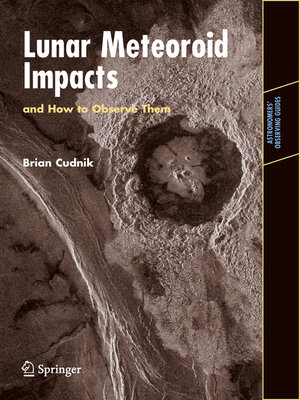Lunar Meteoroid Impacts and How to Observe Them
ebook ∣ Astronomers' Observing Guides
By Brian Cudnik

Sign up to save your library
With an OverDrive account, you can save your favorite libraries for at-a-glance information about availability. Find out more about OverDrive accounts.
Find this title in Libby, the library reading app by OverDrive.



Search for a digital library with this title
Title found at these libraries:
| Library Name | Distance |
|---|---|
| Loading... |
The genesis of modern searches for observable meteoritic phenomena on the Moon is the paper by Lincoln La Paz in Popular Astronomy magazine in 1938. In it he argued that the absence of observed fashes of meteoritic impacts on the Moon might be interpreted to mean that these bodies are destroyed as luminous meteors in an extremely rarefed lunar atmosphere. The paper suggested the possibility of systematic searches for such possible lunar meteors. With these concepts in mind, I was surprised to note a transient moving bright speck on the Moon on July 10, 1941. It appeared to behave very much as a lunar meteor would – except that the poorly estimated duration would lead to a strongly hyperbolic heliocentric velocity. Thus, the idea of systematic searches for both p- sible lunar meteors and meteoritic impact fashes was born. It was appreciated that much time might need to be expended to achieve any positive results. Systematic searches were carried out by others and myself chiefy in the years 1945–1965 and became a regular program at the newly founded Association of Lunar and Planetary Observers, or ALPO.







